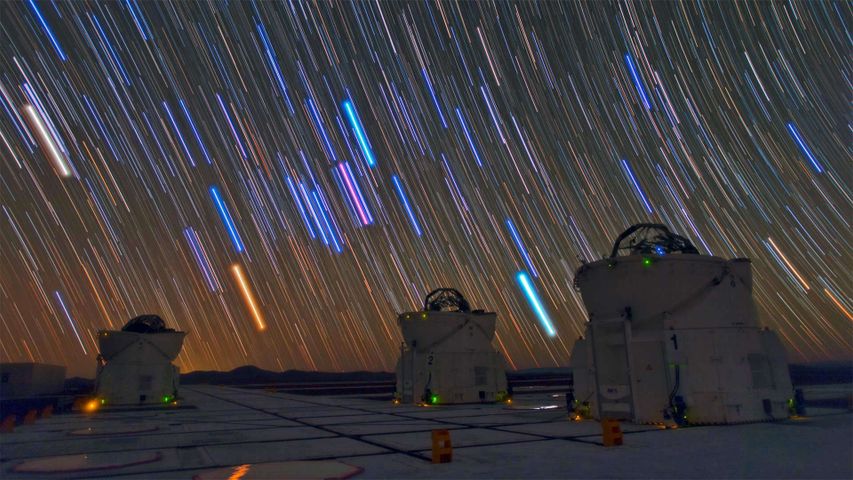Panoramic view of the Bernina Range with blood moon, Eastern Alps, Switzerland
© Bernd Zoller/Shutterstoc
Get ready for the blood moon. Lunar eclipse
If you’re lucky enough to find yourself under a cloudless sky tonight, you'll be able to see one of our solar system’s great wonders, a full lunar eclipse, also known as a blood moon. The nickname comes from the reddish hue the Moon takes on when Earth casts its shadow upon it. Featured here is a blood moon over the Swiss Alps. A full lunar eclipse occurs when the Earth and Moon align perfectly with the Sun, and the Moon falls directly behind Earth’s shadow. When Earth falls behind the Moon’s shadow, a solar eclipse occurs.
While total eclipses of the Sun are more dramatic, total lunar eclipses are majestic in their own right and much more user-friendly. For one thing, you can look directly at a total lunar eclipse without worrying about harming your eyes. And far more people see them than see solar eclipses. That’s because a total lunar eclipse can last for hours, while solar eclipses last just a few minutes. And lunar eclipses can be seen anywhere on the night-time side of the world, while total solar eclipses occur only within a narrow longitude.
Tonight’s lunar eclipse coincides with the flower moon, the full moon of every May. It will begin just after 0230 BST on the morning of 16 May, with the full eclipse occurring just before 4.30am. It can be seen from Europe, Africa, North and South America and parts of Asia. While not exactly rare, total lunar eclipses don’t occur too often and can be hidden by cloud cover. If you miss tonight’s blood moon, you’ll get a second chance in November. After that, the next chance will be in three years, so you might want to plan to stay up late.
Related Images
Bing Today Images



 Yoho National Park, British Columbia, Canada
Yoho National Park, British Columbia, Canada
 View from the cupola of the International Space Station above the South Pacific Ocean
View from the cupola of the International Space Station above the South Pacific Ocean
 Polar bear cub, Churchill, Manitoba, Canada
Polar bear cub, Churchill, Manitoba, Canada
 Castle Stalker on Loch Laich, Argyll, Scotland
Castle Stalker on Loch Laich, Argyll, Scotland
 Sandstone hoodoos, Bryce Canyon National Park, Utah, United States
Sandstone hoodoos, Bryce Canyon National Park, Utah, United States
 Red deer, Canada
Red deer, Canada
 Medieval towers in Mestia, Upper Svaneti, Georgia
Medieval towers in Mestia, Upper Svaneti, Georgia
 Ribblehead Viaduct and Ingleborough mountain, North Yorkshire, England
Ribblehead Viaduct and Ingleborough mountain, North Yorkshire, England



